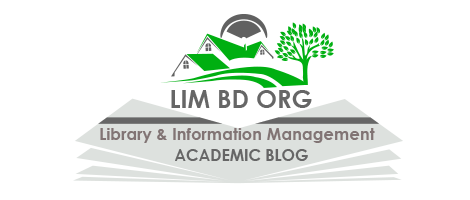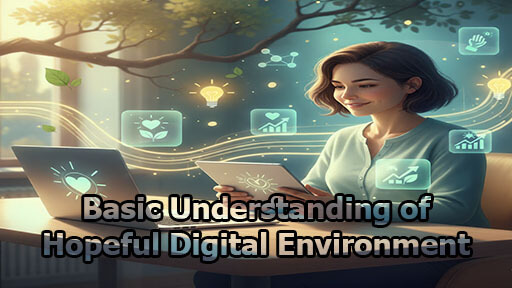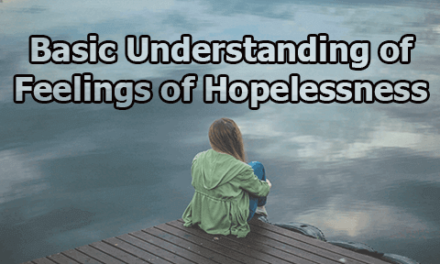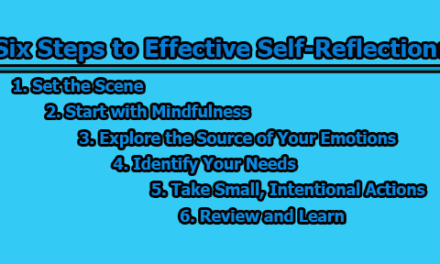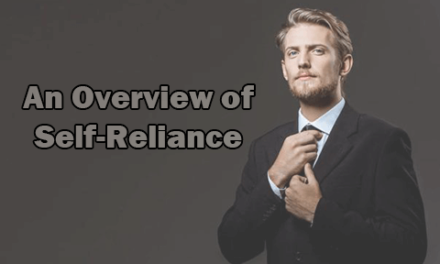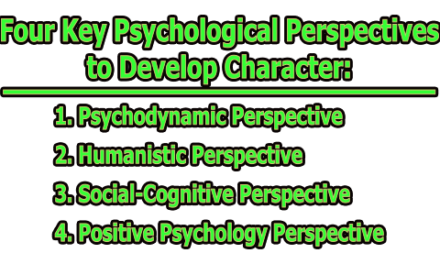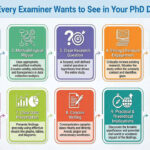Basic Understanding of Hopeful Digital Environment:
In today’s hyper-connected world, digital spaces have become both a source of empowerment and emotional exhaustion. The constant influx of emails, notifications, and social media updates can easily lead to feelings of overwhelm, distraction, and disengagement. Amid this digital noise, the concept of hope emerges as a vital psychological resource—one that not only sustains motivation but also nurtures emotional resilience. Psychologists describe hope as a cognitive and emotional process that supports goal-directed determination and the planning necessary to achieve meaningful outcomes (Snyder, 2000). Within the digital context, hope functions as a protective buffer, helping individuals navigate online negativity while maintaining optimism about future possibilities (Abramson, 2024; Snyder, 2000). By cultivating mindful media habits and aligning digital engagement with personal values and goals, individuals and practitioners alike can help shape a more balanced, hopeful digital environment that enhances mental wellbeing and supports healthier online experiences. In the rest of this article, we will explore the basic understanding of hopeful digital environment.
Why the Psychology of Hope is Crucial in the Digital Age:
“Hope isn’t a denial of what is, but a belief that the current situation is not all that can be,” said former American Psychological Association president Thema Bryant (Abramson, 2024, para. 3). This statement captures the essence of hope as a powerful and realistic mindset rather than a form of escapism or blind optimism. In an age where digital platforms often amplify negativity, misinformation, and comparison culture, cultivating hope has become an essential psychological tool for maintaining balance and resilience.
Unlike the countless positive yet superficial affirmations shared across social media, true hope is not mere wishful thinking. Instead, it is an active, structured process grounded in psychological theory. According to Charles Snyder’s (1994) hope theory, hope is a positive motivational state composed of two interrelated components: agency, which refers to the energy and determination to pursue one’s goals, and pathways, which involve the planning and strategizing needed to reach those goals. Together, these elements form the foundation for purposeful action and adaptive coping, distinguishing genuine hope from passive optimism (Snyder, 1994, 2000, 2002).
In essence, hope operates as both a cognitive and motivational process. It empowers individuals not only to envision better futures but also to take concrete steps toward achieving them. Within the context of digital life, this becomes especially relevant. The overwhelming flow of online information, the pressure of constant connectivity, and exposure to negative digital content can easily erode emotional wellbeing. Hope acts as a psychological buffer, countering stress and fostering emotional regulation. It encourages users to focus on meaningful engagement, rather than succumbing to cynicism or helplessness in the face of digital chaos (Faulhaber et al., 2023; Samra et al., 2022).
Ultimately, integrating the psychology of hope into our digital behaviors can reshape the way we interact with technology. By nurturing agency and developing purposeful online habits, individuals can build a hopeful digital environment—one that uplifts, empowers, and supports mental health even amid the challenges of modern connectivity.
Difference Between Hope and Helplessness in the Information Age:
In our modern, vast-connected world, people are constantly bombarded with an overwhelming stream of digital content—from breaking news and social media updates to endless notifications and advertisements. This phenomenon, often referred to as information overload, can easily lead to feelings of confusion, exhaustion, and emotional paralysis. When individuals begin to feel that they have little or no control over this flood of information, they may slip into a psychological state known as helplessness. Helplessness is characterized by a deep sense of powerlessness—a belief that no matter what one does, outcomes cannot be changed or influenced (Snyder, 2000; Laranjeira & Querido, 2022).
Social media plays a particularly complex role in this process. While it offers connection and information-sharing opportunities, it can also become emotionally damaging when paired with harmful or unrealistic content. Constant exposure to idealized lifestyles, negative commentary, or distressing global events can distort self-perception and create a sense of inadequacy. Over time, this digital fatigue may evolve into learned helplessness—a condition in which individuals stop trying to improve their situations because they believe their actions have no meaningful impact (Abramson, 2024; Faulhaber et al., 2023). The toxic cycle of doomscrolling and comparison not only harms mental health but also diminishes our ability to see possibilities for positive change.
In contrast, hope offers a path toward healing and empowerment. Unlike helplessness, hope is an active, forward-looking mindset that inspires determination, focus, and purposeful action. It encourages individuals to view challenges as temporary and manageable rather than permanent or uncontrollable. As Abramson (2024) notes, “A growing body of research suggests that if you want to cultivate positive change—in yourself, others, or society—restoring hope is a vital first step” (para. 1). This underscores that hope is not merely a comforting emotion but a catalyst for transformation.
Moreover, while hope can develop individually, it flourishes within supportive communities. Positive social connections—both online and offline—can reinforce a hopeful outlook by fostering empathy, understanding, and encouragement. Joining digital spaces that promote inspiration, authenticity, and mutual respect can counteract the negativity often found online. Engaging in these healthier environments helps to reduce the harmful effects of toxic content, enhances one’s vision for the future, and contributes to building a more hopeful digital environment (Abramson, 2024).
Eventually, the difference between hope and helplessness in the information age lies in perspective and agency. Where helplessness sees limits, hope sees potential. By intentionally curating our digital experiences and surrounding ourselves with uplifting, value-driven communities, we can replace despair with determination—and transform the online world into a space that strengthens, rather than drains, our emotional wellbeing.
How Digital Environments Impact Mental Health:
Our digital environments play a defining role in shaping how we think, feel, and interact. In today’s world, our emotional wellbeing is increasingly intertwined with our online lives, as digital spaces influence how we perceive ourselves, relate to others, and process information (Faulhaber et al., 2023). The digital environment is not a neutral space—it is a powerful ecosystem shaped by algorithms, user behavior, and cultural trends. Understanding how these elements affect mental health helps us use technology more mindfully and create healthier online habits.
- Social Comparison: One of the most significant psychological effects of digital life is social comparison. Social media platforms are designed to showcase the best moments of users’ lives—carefully curated images, achievements, vacations, and milestones. This selective presentation can create an illusion that others are happier, more successful, and more fulfilled than we are (Samra et al., 2022). As users scroll through these endless highlight reels, they may internalize unrealistic standards, leading to feelings of inadequacy, envy, anxiety, or dissatisfaction with their own lives.
This process is known as upward social comparison, where individuals compare themselves to those perceived as better off. Studies show that the more time people spend engaging in such comparisons online, the more likely they are to experience depressive symptoms and lower self-esteem (Samra et al., 2022). Over time, this can contribute to social media addiction and emotional exhaustion, particularly when individuals feel pressured to maintain an idealized digital persona.
- Exposure to Sensational and Negative Content: Another key factor influencing mental health in digital spaces is the dominance of sensationalized and emotionally charged content. Online news outlets and social platforms rely heavily on algorithms that prioritize engagement—meaning that shocking, controversial, or fear-inducing stories are more likely to appear in users’ feeds. Consequently, people are repeatedly exposed to a steady stream of crises, disasters, and outrage, with minimal visibility of positive or hopeful news (Shabahang et al., 2021).
This disproportionate exposure fosters negativity bias, reinforcing anxiety, helplessness, and pessimism about the world. Continuous interaction with such content can distort one’s worldview, making global and personal problems feel insurmountable (Shabahang et al., 2021). For many users, this cycle contributes to digital fatigue and emotional burnout.
- Algorithmic Influence: Social media platforms are not passive communication tools—they are sophisticated systems designed to capture and sustain attention. Algorithms analyze user behavior, amplify emotionally engaging content, and personalize feeds in ways that can inadvertently heighten emotional distress. As Shabahang et al. (2024) explain, this process is part of the attention economy, where user engagement drives platform profitability.
Unfortunately, this often leads to the amplification of high-arousal emotions such as fear, anger, and outrage. The result is an echo chamber effect, where users are continually exposed to similar viewpoints and emotional triggers. Over time, this creates a cycle of negativity that limits perspective and reduces exposure to balanced or hopeful narratives (Shabahang et al., 2024).
- Emotional Spillover from Negative Content: The emotional consequences of digital engagement often extend beyond the screen. After reading distressing news stories or engaging in heated online debates, individuals may unknowingly carry those emotions into their offline lives. This emotional spillover can manifest as irritability, anxiety, or sadness that lingers throughout the day, even when the initial trigger is forgotten (Rubin & Beuk, 2021).
Regular exposure to negative or conflict-laden online interactions can heighten feelings of loneliness, envy, depression, and emotional fatigue. However, not all digital experiences are harmful. When used intentionally, social media can serve as a platform for connection, creativity, and personal growth. Positive engagement—such as sharing supportive messages, joining interest-based communities, or expressing gratitude—can foster kindness, empathy, and sociability (Rubin & Beuk, 2021).
- Digital Overload and Cognitive Fatigue: Beyond emotional consequences, the sheer volume of digital input can lead to cognitive fatigue. Constant notifications, multitasking across platforms, and the pressure to stay “always online” overwhelm our mental bandwidth. This constant stimulation can impair concentration, reduce productivity, and interfere with the brain’s ability to rest and recharge (Faulhaber et al., 2023). Prolonged exposure to digital overload may also contribute to sleep disturbances, irritability, and burnout, especially among younger users and professionals in high-tech environments.
- FOMO (Fear of Missing Out) and Online Validation: The fear of missing out—commonly known as FOMO—has become a defining psychological effect of the digital age. Seeing others’ achievements or social activities can create anxiety about not being included or successful enough. The need for social validation through likes, shares, and comments reinforces this anxiety, tying self-worth to digital metrics (Samra et al., 2022). Over time, individuals may develop compulsive checking behaviors, seeking reassurance through constant online engagement.
- Cyberbullying and Digital Harassment: An often-overlooked aspect of digital mental health is exposure to online harassment and cyberbullying. Negative comments, trolling, or targeted attacks can have devastating effects on mental wellbeing, particularly for adolescents and marginalized groups. Victims often report heightened levels of stress, depression, and social withdrawal, which can persist long after the incident (Faulhaber et al., 2023). Building safer digital environments that emphasize respect, empathy, and accountability is therefore crucial.
- Toward a Healthier Digital Mindset: While digital environments can expose individuals to negativity and emotional strain, they also hold the potential to nurture wellbeing. By practicing mindful media consumption, setting boundaries, and engaging in value-driven digital activities, users can reclaim control over their online experiences. Encouraging hope, balance, and community support allows digital spaces to become not sources of distress, but environments for learning, connection, and personal growth.y
What Is a Media Diet & Why Does It Matter?
In the digital era, the concept of a media diet has become increasingly relevant to understanding how our online habits influence our thoughts, emotions, and overall mental wellbeing. Just as the foods we consume affect our physical health, the media we engage with shapes our psychological and emotional states. Our media diet includes every digital element we take in—social media posts, videos, podcasts, blogs, and even the news stories we follow daily (Shabahang et al., 2021; Shabahang et al., 2024).
The quality and tone of our media diet can determine whether we cultivate a toxic digital environment filled with negativity and stress or a hopeful digital environment that supports optimism and emotional balance. For example, constantly consuming envy-inducing photos, polarizing political debates, or doom-laden news updates can create a sense of fear, inadequacy, and pessimism about the world (Rubin & Beuk, 2021). Over time, this unbalanced consumption leads to cognitive fatigue and emotional depletion, shaping how we interpret reality and how hopeful—or hopeless—we feel about the future.
On the other hand, a well-balanced media diet that includes educational, creative, or uplifting content can enhance our sense of agency and optimism. When we intentionally choose digital material that informs, inspires, and supports personal growth, we begin to counteract the negative mental effects of the modern information ecosystem.
Information Hygiene and Media Literacy: Closely related to the idea of a healthy media diet are the concepts of information hygiene and media literacy. Information hygiene refers to the mindful habits and practices that ensure our media consumption remains “clean,” credible, and safe. Much like washing our hands protects us from germs, good information hygiene protects our minds from misinformation, manipulation, and emotional contagion (Austin et al., 2012; Lee & Ramazan, 2021).
Practicing good information hygiene includes:
- Verifying the credibility of sources by checking whether information comes from reliable and evidence-based outlets.
- Avoiding the spread of unverified rumors that can contribute to misinformation cycles.
- Being mindful of biases, both in ourselves and in the sources we consume.
- Limiting exposure to misinformation-heavy platforms, especially those known for sensationalism.
- Double-checking shocking or emotionally charged claims before believing or sharing them.
These habits help create a more informed and emotionally stable media experience. Meanwhile, media literacy extends beyond hygiene—it’s the ability to critically evaluate media content, identify bias, and understand how algorithms manipulate what we see. Media-literate individuals recognize that online platforms prioritize engagement and profit, often amplifying trends, propaganda, or polarizing content rather than balanced truth (Austin et al., 2012; Lee & Ramazan, 2021).
For example, an increase in crime reporting on news outlets does not necessarily reflect a rise in actual crime rates; rather, it reflects editorial and algorithmic choices designed to capture attention. Understanding these distortions empowers individuals to build a more hopeful digital environment grounded in reality rather than media-induced fear or cynicism (Austin et al., 2012; Lee & Ramazan, 2021).
Spillover Effects of Negative Media Use: An unbalanced or toxic media diet does not only affect our emotions—it also has behavioral and physiological consequences. Prolonged exposure to distressing or sensationalized media content can impair concentration, motivation, and productivity. During times of crisis, such as pandemics, political unrest, or natural disasters, people who constantly consume negative news are more likely to experience heightened anxiety, helplessness, and hopelessness (Rubin & Beuk, 2021). This emotional overload can reduce the drive to pursue value-based goals, hobbies, or personal growth, resulting in emotional withdrawal or apathy.
Furthermore, the timing and intensity of media consumption play critical roles in wellbeing. Late-night scrolling and excessive screen time disrupt sleep cycles by suppressing melatonin production, which contributes to insomnia and fatigue (Rubin & Beuk, 2021). Chronic stress caused by information overload may also encourage unhealthy coping mechanisms such as overeating, alcohol consumption, or emotional withdrawal. In contrast, mindful engagement—setting limits, curating content intentionally, and taking digital breaks—helps restore balance and promote restorative rest.
Toward a Healthier and Hopeful Media Diet: Building a healthier media diet requires conscious effort. It involves setting boundaries around screen time, curating digital spaces that reflect personal values, and seeking content that uplifts rather than overwhelms. This may include following educational accounts, listening to inspiring podcasts, engaging with online communities focused on wellbeing or creativity, and intentionally reducing exposure to negativity or outrage-driven media.
Consequently, our media diet determines the tone of our inner world. By practicing sound information hygiene, developing critical media literacy, and balancing our digital consumption, we can protect our mental health, foster resilience, and cultivate a more hopeful digital environment—one that supports connection, learning, and authentic growth in the information age.
9 Positive Psychology Tips for Designing a Hopeful Digital Environment:
Positive psychology provides valuable insights into how individuals can create more meaningful, optimistic, and emotionally healthy digital lives. Rather than allowing online environments to dictate our mood or attention, positive psychology encourages intentional use of technology to cultivate joy, resilience, and purpose. Research suggests that adopting positive psychology principles in our digital routines can help us create more frequent positive moments online, enhance engagement, and reduce the negative effects of passive scrolling (Hunt et al., 2018; Verduyn et al., 2017).
Furthermore, positive psychology emphasizes the role of supportive social connections in maintaining wellbeing. By fostering empathy and kindness through online interactions, individuals can buffer the emotional harm caused by toxic content and nurture a stronger sense of belonging (Verduyn et al., 2017). When digital habits are intentionally aligned with one’s personal values and life goals, people are more likely to experience purpose, motivation, and satisfaction in both online and offline environments (Sahay, 2023; Tomasulo, 2020).
Below are nine evidence-based tips drawn from positive psychology that can help individuals—and practitioners working with clients—design a more hopeful, balanced, and enriching digital environment (Hunt et al., 2018; Sahay, 2023; Verduyn et al., 2017; Tomasulo, 2020).
- Create a Balanced Media Diet: Just as our physical health depends on what we eat, our psychological wellbeing depends on what we consume digitally. Take time to evaluate the quantity and quality of the media you engage with daily. A balanced media diet involves unsubscribing from toxic, misleading, or distressing feeds and choosing content that informs, uplifts, and inspires. This intentional curation helps minimize exposure to negativity and ensures that your digital experience supports emotional health and personal growth.
- Set Limits: Healthy boundaries are essential for a hopeful digital life. Set realistic limits for when and how long you use social media, news platforms, or messaging apps. Use built-in screen-time tools or digital wellbeing apps to track and manage your usage. Consider scheduling digital detox periods—times when you intentionally disconnect by leaving your devices in another room. These breaks not only reduce distraction but also restore focus and improve overall mental clarity.
- Begin Your Day Positively: The way we start our day shapes the tone for the hours that follow. Instead of reaching for your phone immediately upon waking, begin with activities that nurture your body and mind—such as exercise, meditation, journaling, or practicing gratitude. Early exposure to digital noise can trigger anxiety and overstimulation; therefore, allowing yourself a device-free morning routine sets a calmer, more hopeful foundation for the day ahead.
- Use Technology for Gratitude: While digital platforms can contribute to stress, they can also serve as tools for positivity and connection when used mindfully. Try maintaining an online gratitude journal—a private or shared digital space where you regularly note things you are thankful for. You can also use social media to send messages of appreciation or encouragement to others. Research suggests that expressions of gratitude strengthen relationships and boost happiness for both the sender and receiver (Sahay, 2023; Tomasulo, 2020).
- Follow Inspiring Individuals and Organizations: Your digital feed reflects and influences your mindset. To create a hopeful online environment, follow individuals, organizations, and communities that inspire you, align with your values, and promote authentic, positive messages. Doing so can counterbalance the negativity and cynicism that often dominate social media, while reminding you of the good happening in the world (Verduyn et al., 2017).
- Be Active and Supportive Online: Passive scrolling can lead to emotional disengagement and dissatisfaction. Positive psychology encourages active engagement—commenting kindly, offering constructive feedback, or sharing supportive messages. These small acts of kindness create ripples of positivity across digital spaces, helping both you and others feel more connected and valued (Hunt et al., 2018).
- Observe Mindful Engagement: Mindful engagement involves being fully present while consuming digital content. Notice how you feel as you scroll, read, or comment online. Are you energized, inspired, or drained? When you encounter distressing or emotionally charged material, take mindful breaks to regulate your mood. Practicing awareness of your emotional responses helps prevent reactivity and supports more intentional, balanced online behavior (Verduyn et al., 2017).
- Align Media Consumption with Personal Goals: Ask yourself: Why am I online? and Is this activity aligned with my values and goals? When digital engagement serves a clear purpose—whether learning, connecting, or creating—it becomes a meaningful part of personal development rather than a source of distraction. Reflecting on these questions can transform media consumption from a passive habit into a goal-oriented, fulfilling practice (Sahay, 2023).
- Prioritize Real Connections and Offline Activities: While online relationships can be rewarding, they should complement—not replace—face-to-face connections. Regularly scheduling time to meet friends, family, or colleagues helps nurture genuine social bonds, which are essential for resilience and hope. Offline engagement—such as outdoor activities, creative hobbies, or volunteering—fosters a sense of community and balance that sustains long-term wellbeing (Tomasulo, 2020).
Subsequently, Applying positive psychology principles to our digital lives is not about rejecting technology—it’s about reclaiming control over how we use it. By cultivating gratitude, mindfulness, balance, and purposeful engagement, we can transform our digital environments into spaces that reflect our best selves. Ultimately, these small but meaningful adjustments help us move from passive consumption toward active creation, building a more hopeful, connected, and emotionally nourishing digital world.
How to Help Clients Build a Healthier Media Diet:
Helping clients build a healthier media diet involves promoting awareness, self-regulation, and alignment with personal values. Mental health practitioners, coaches, and educators can play a key role in guiding individuals to develop healthier digital habits that foster a hopeful digital environment rather than a draining or toxic one.
- Challenge the “Constant Consumption to Stay Informed” Mindset: Many people mistakenly believe that staying informed requires continuous digital engagement. This mindset—rooted in the fear of missing out or the belief that constant monitoring equals control—often leads to emotional exhaustion and anxiety. However, being informed is not the same as being overwhelmed. When individuals continuously check news updates or social feeds, they often experience heightened stress and a distorted sense of danger or hopelessness (Shabahang et al., 2021).
To counter this, encourage clients to recognize that they do not need to be updated minute by minute. Suggest scheduling specific times—for instance, 20 to 30 minutes once a day—to catch up on the news using reputable and balanced sources. This structured approach helps reduce emotional reactivity and fosters a calmer, more optimistic mindset. Adopting a practice of delayed engagement—waiting before reacting or checking updates—can further reduce anxiety and create space for more meaningful offline activities (Shabahang et al., 2021).
- Encourage Intentional Intake Goals: Helping clients set intentional and realistic goals for media consumption can promote accountability and awareness. For instance, reducing daily screen time from three hours to one or limiting social media to certain times of the day may be achievable and sustainable. Using digital wellbeing tools or apps that track screen time and incorporate gamification—such as awarding badges or milestones for reduced use—can make these changes more engaging. The key is to make digital habits conscious choices rather than automatic responses.
- Goal Setting and Value Alignment: Goals become more meaningful when they reflect personal values and aspirations. Work with clients to explore what they truly want their digital life to represent. For example, if a client values connection, their goal might be to use social media primarily to maintain meaningful relationships rather than mindless scrolling. If learning is a priority, they might curate feeds to include educational podcasts or thoughtful journalism. Aligning digital habits with values transforms media use into a purpose-driven activity that enhances, rather than detracts from, overall wellbeing (Shabahang et al., 2021).
- Promote Mindful Media Engagement: Mindful media engagement means being aware and intentional during digital interactions. Encourage clients to check in with themselves while consuming content: “How do I feel right now?” “Is this content adding value to my life or draining me?” Teaching clients to notice physical and emotional cues—like tension, frustration, or comparison—can help them identify when to step away and reset. Incorporating brief digital mindfulness exercises, such as deep breathing before opening an app or setting daily “unplug” moments, reinforces healthier habits.
- Establish Digital Boundaries and Safe Spaces: Boundaries are essential for maintaining digital wellbeing. Clients can create device-free zones—for example, no phones during meals or in the bedroom—or designate specific times of the day for offline activities. Encourage them to turn off unnecessary notifications, unsubscribe from spammy newsletters, and unfollow accounts that provoke stress or insecurity. By curating digital environments that feel safe and purposeful, individuals can reduce exposure to negativity and create emotional space for reflection and connection.
- Reframe “Digital Detox” as “Digital Balance”: Many people think a digital detox means complete disconnection, which can feel unrealistic or punitive. Instead, help clients view it as a process of digital balance. Rather than quitting technology, the goal is to develop healthier, more sustainable patterns of use. Encourage periodic short breaks—such as screen-free evenings or weekends—combined with positive replacement activities like reading, spending time outdoors, or engaging in hobbies. This reframing makes change feel empowering rather than restrictive.
- Cultivate Positive Digital Substitutions: When reducing screen time, clients often struggle with what to do instead. Help them find positive digital alternatives that fulfill similar needs without the same psychological cost. For example, replacing passive scrolling with guided meditation apps, educational YouTube channels, or virtual volunteering opportunities can maintain engagement while promoting growth and wellbeing. These substitutions make it easier to transition from mindless consumption to meaningful interaction.
- Encourage Reflective Practices: Reflection transforms awareness into long-term change. Encourage clients to keep a digital diary or journal where they record how their media habits affect their emotions, focus, and productivity. Over time, they can identify patterns—such as which types of content elevate their mood and which drain it. Regularly reviewing these reflections can reinforce motivation and deepen understanding of the relationship between digital behavior and emotional health.
- Model Healthy Digital Behavior: Practitioners themselves can serve as role models by demonstrating balanced digital use. Sharing personal experiences—such as limiting phone use before bed or setting news-free days—can normalize healthy digital habits for clients. Modeling authentic, mindful technology engagement helps clients see that balance is achievable and realistic, even in a digitally dependent world.
- Fostering Hope and Connection Through Digital Balance: Finally, helping clients build a healthier media diet is about empowerment and self-awareness. When individuals take control of their digital consumption, they create space for optimism, creativity, and meaningful connection. Through intentional goal setting, mindful habits, and value-driven choices, clients can transform their digital experiences from sources of stress into opportunities for hope and growth. In doing so, they contribute to a more hopeful digital environment—one that supports emotional resilience, self-compassion, and authentic human connection (Shabahang et al., 2021).
In conclusion, as our dependence on the digital world deepens, it becomes increasingly important to approach it with intentionality, awareness, and hope. The goal is not to withdraw from technology but to engage with it in ways that nurture rather than drain our mental and emotional wellbeing. Mental health professionals play a vital role in guiding clients toward this balance—helping them harness the positive potential of online spaces while safeguarding against overwhelm and negativity. By fostering hope, balance, and resilience (Snyder, 2000; Shabahang et al., 2021), individuals can transform their digital experiences into sources of inspiration, connection, and growth. Ultimately, when approached mindfully and purposefully, the digital environment can become a powerful ally in building a flourishing life that reflects one’s deepest values and aspirations.
Frequently Asked Questions (FAQs):
How much news is enough in a healthy media diet?
A healthy media diet focuses on balance rather than total avoidance. Experts suggest setting a specific, limited time—around 20–30 minutes per day—to catch up on reliable news sources (Shabahang et al., 2021). This approach helps you stay informed without becoming overwhelmed by negativity or information overload.
What types of content boost hope?
Content that promotes optimism, gratitude, learning, and community engagement can help foster hope. Following inspiring individuals, educational pages, or positive storytelling channels can elevate mood and strengthen emotional resilience (Sahay, 2023; Tomasulo, 2020).
Can changing digital habits make you truly more hopeful?
Yes, research shows that mindful media use and intentional digital habits can increase emotional wellbeing, motivation, and confidence in the future (Snyder, 2000; Verduyn et al., 2017). Aligning your online activity with personal values and goals supports a more hopeful digital environment.
How can I recognize when my media diet is unhealthy?
If you often feel anxious, irritable, or hopeless after spending time online—or if digital consumption interferes with your sleep, work, or relationships—these are signs that your media diet may need adjustment (Rubin & Beuk, 2021).
What are practical steps to create a balanced media diet?
Set clear time limits, follow credible sources, unfollow toxic or misleading pages, and take regular digital detox breaks. Keeping track of how certain content makes you feel can help you refine your digital habits (Shabahang et al., 2024).
How can hope counteract the effects of digital negativity?
Hope encourages problem-solving, resilience, and goal-directed thinking. When individuals view challenges as temporary and surmountable, they’re less likely to succumb to digital pessimism or helplessness (Snyder, 2000; Abramson, 2024).
Are social media platforms inherently harmful?
Not necessarily. The impact depends on how they are used. Positive engagement, authentic communication, and mindful consumption can transform social media into a space of connection and growth rather than comparison and stress (Samra et al., 2022).
How can professionals help clients build healthier digital habits?
Practitioners can guide clients to develop intentional online routines, identify value-driven goals, and cultivate mindfulness during media use. Encouraging reflection and gratitude practices online can also enhance digital wellbeing (Hunt et al., 2018).
What role do algorithms play in shaping our emotions?
Algorithms are designed to maximize engagement, often by amplifying emotionally charged content. Awareness of this helps individuals take control of what they consume and diversify their sources to maintain balance and perspective (Shabahang et al., 2024).
Can hope really thrive in the digital world?
Absolutely, by consciously designing a hopeful digital environment—filled with supportive communities, uplifting content, and purposeful engagement—individuals can transform online spaces into platforms for growth, empathy, and shared optimism (Sahay, 2023; Tomasulo, 2020).
References:
- Abramson, A. (2024, January 1). Hope as the antidote. Monitor on Psychology. Retrieved October 15, 2025, from https://www.apa.org/monitor/2024/01/trends-hope-greater-meaning-life
- Austin, E. W., Pinkleton, B. E., Austin, B. W., & Van de Vord, R. (2012). The relationships of information efficacy and media literacy skills to knowledge and self-efficacy for health-related decision making. Journal of American College Health, 60(8), 548–554. https://doi.org/10.1080/07448481.2012.726302
- Faulhaber, M. E., Lee, J. E., & Gentile, D. A. (2023). The effect of self-monitoring limited social media use on psychological wellbeing. Technology, Mind, and Behavior, 4(2). https://doi.org/10.1037/tmb0000111
- Hunt, M. G., Marx, R., Lipson, C., & Young, J. (2018). No more FOMO: Limiting social media decreases loneliness and depression. Journal of Social and Clinical Psychology, 37(10), 751–768. https://doi.org/10.1521/jscp.2018.37.10.751
- Laranjeira, C., & Querido, A. (2022). Hope and optimism as an opportunity to improve the “positive mental health” demand. Frontiers in Psychology, 13, Article 827320. https://doi.org/10.3389/fpsyg.2022.827320
- Lee, D. K. L., & Ramazan, O. (2021). Fact-checking of health information: The effect of media literacy, metacognition and health information exposure. Journal of Health Communication, 26(7), 491–500. https://doi.org/10.1080/10810730.2021.1955312
- Rubin, E. & Beuk, F. (2021). Emotions and spillover effects of social networks affective well being. Journal of Organizational and End User Computing (JOEUC), 33(5), 1–24. https://doi.org/10.4018/JOEUC.20210901.oa1
- Sahay, S. (2023). What role does “hope” play in ICT4D research? The Information Society, 40(1), 54–64. https://doi.org/10.1080/01972243.2023.2279966
- Samra, A., Warburton, W. A., & Collins, A. M. (2022). Social comparisons: A potential mechanism linking problematic social media use with depression. Journal of Behavioral Addictions, 11(2), 607–614. https://doi.org/10.1556/2006.2022.00023
- Shabahang, R., Aruguete, M. S., & Shim, H. (2021). Online news addiction: Future anxiety, fear of missing out on news, and interpersonal trust contribute to excessive online news consumption. Online Journal of Communication and Media Technologies, 11(2), Article e202105. https://doi.org/10.30935/ojcmt/10822
- Shabahang, R., Hwang, H., Thomas, E. F., Aruguete, M. S., McCutcheon, L. E., Orosz, G., Hossein Khanzadeh, A. A., Mokhtari Chirani, B., & Zsila, Á. (2024). Doomscrolling evokes existential anxiety and fosters pessimism about human nature. Evidence from Iran and the United States. Computers in Human Behavior Reports, 15, 100438. https://doi.org/10.1016/j.chbr.2024.100438
- Snyder, C. R. (1994). The psychology of hope: You can get there from here. Free Press.
- Snyder, C. R. (2000). Handbook of hope: Theory, measures, and applications (1st ed.). Elsevier Science & Technology.
- Snyder, C. R. (2002). Hope theory: Rainbows in the mind. Psychological Inquiry, 13(4), 249–275. https://doi.org/10.1207/s15327965pli1304_01
- Tomasulo, D. (2020). Learned hopefulness: The power of positivity to overcome depression. New Harbinger.
- Verduyn, P., Ybarra, O., Résibois, M., Jonides, J., & Kross, E. (2017). Do social network sites enhance or undermine subjective well‐being? Social Issues and Policy Review, 11(1), 274–302. https://doi.org/10.1111/sipr.12033

Library Lecturer at Nurul Amin Degree College
